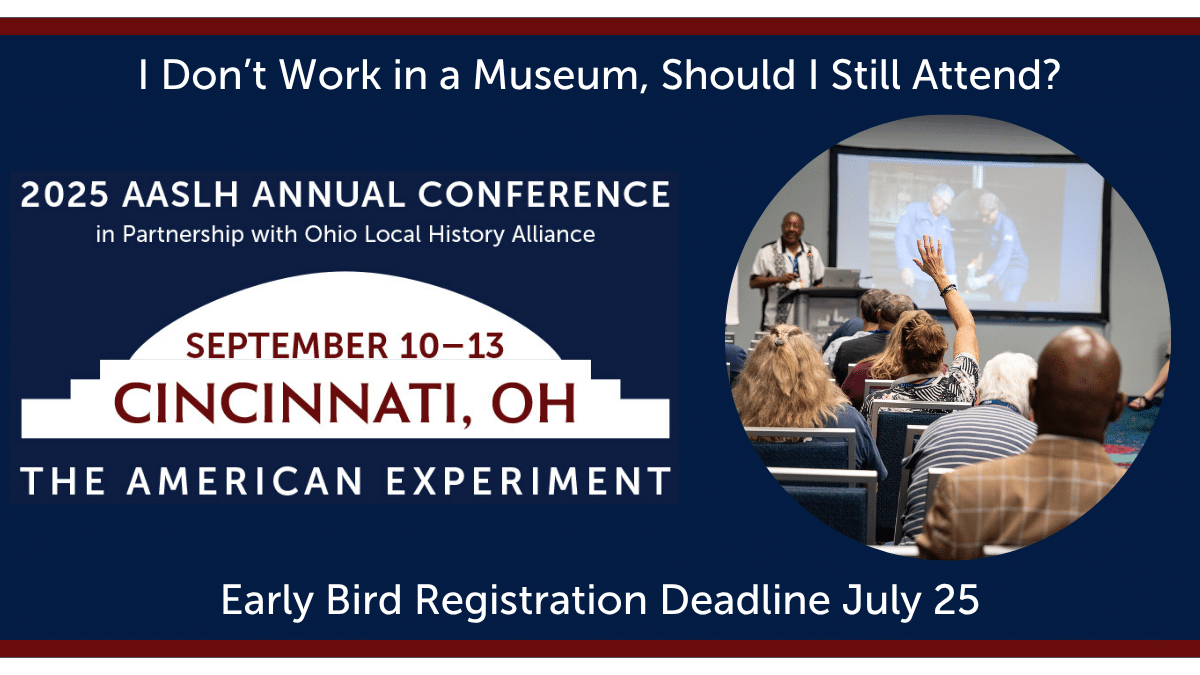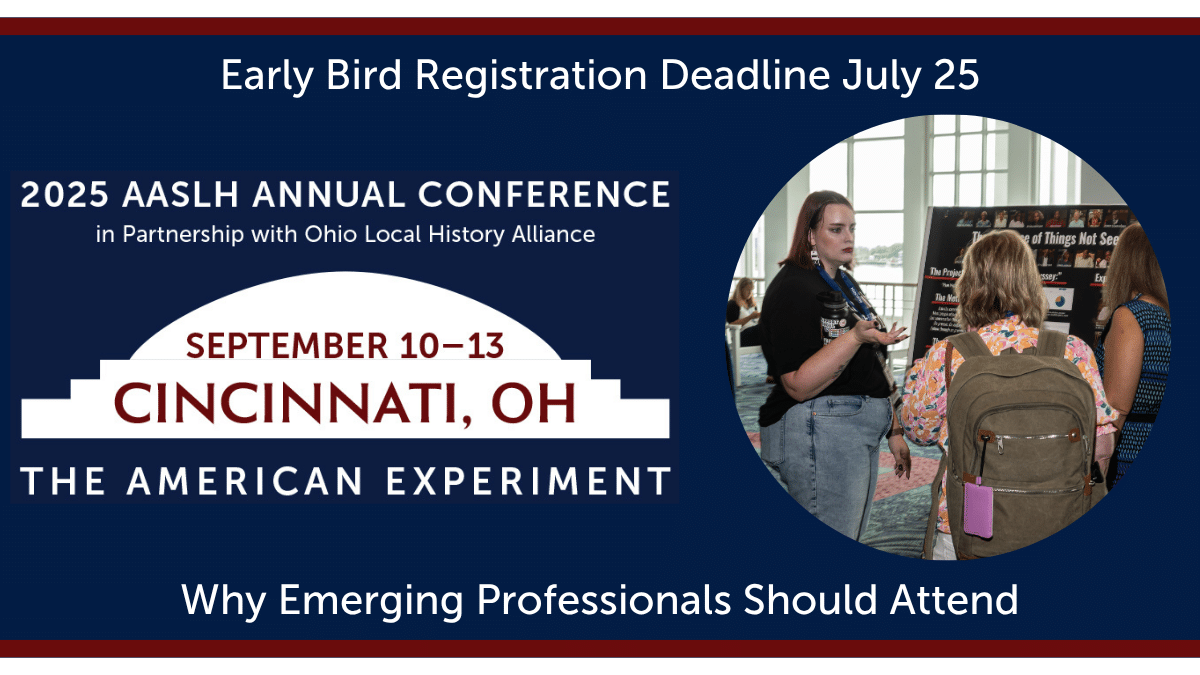
Courtesy of Montpelier Foundation.
By Christian Cotz, Kristin Gallas, Linnea Grim, Richard Josey, and Joseph McGill
During the 2018 AASLH Annual Meeting in Kansas City, we facilitated a brainstorming session during which participants shared responses to challenges about interpreting slavery. We sourced the challenges through a call to the field and selected five different scenarios that we used to engage the more than seventy session attendees.
Our goals were to provide attendees with a chance to network with other colleagues who interpret the histories and legacies of slavery; encourage participants to think about interpreting slavery from new angles and consider multiple ways to problem-solve; and inspire participants to try something new when they return to work. Below are the five scenarios we considered, and lists of responses sourced from our discussions.
- Many homes throughout the South still have extant slave dwellings and other buildings where enslaved people lived and worked. Those structures are being lost due to lack of knowledge on the part of the homeowners, and lack of historic preservation funds. What are some best practices for engaging private homeowners, who are overwhelmed with other preservation needs, in preserving these structures and sharing their multi-faceted stories? How can community collaborators help?
- Community organizations can help change the mindset of homeowners and build a strong case for history and historic preservation by providing educational resources and programs for homeowners and community members. The preservation of our community’s story, and these dwellings as a critical part of that story, is the responsibility of our entire community.
- The cost of preservation is always a concern; however, it’s important to help homeowners see the various options available for preserving these structures.
- Be inclusive. It’s vital that we build relationships upon trust and the willingness to work together.
- The vocabulary for interpreting slavery always seems to be changing. Is it “enslaved person” or “slave”? Is it okay to call someone a “slave owner”? Some of my colleagues make light of the “politically correct” language, but I’m confused about what’s appropriate to say. Some of my white colleagues are more comfortable with certain words, and my black colleagues stay away from others. What do I say?
- If you are using period language, be sure to contextualize it so that people understand why you’re using the terminology of the time and you do not end up alienating your visitors.
- The use of the term “enslaved” is historically accurate, as it informs visitors that these were people who had a condition forced upon them. The term “enslaved” points back at the person who was doing the enslaving.
- Educate your visitors on the terms you are using and why.
- You have to do professional development with your staff to share historical content and interpretive techniques.
- Don’t take for granted that your African American visitors are going to be receptive to learning about slavery because they are still dealing with the repercussions of it. Be sensitive to their resistance to or acceptance of the subject matter.
- Our site’s history has a story about children being born of a member of the white slaveholder’s family and an enslaved woman. There are competing versions of the oral history among black and white descendants. Some describe it as rape, others as a love relationship. Many of our staff members are uneasy talking about it, especially if any of the white or black descendant family are present. How do we tell this story?
- Your institution needs to find its core message about the story – what is the interpretive message and what language do you use to describe it?
- Acknowledge that the story evolves over time as new information comes to light and societal understandings change.
- You must talk about power dynamics of a relationship between the enslaved and owner.
- Do not disregard the value of oral histories from descendants of the enslaved.
- Every third grader in our community visits our site as part of their state history curriculum. Slavery is a big part of our site’s story and our state’s economic, political, and social history. Plus, the legacies of racial tension remain in our ethnically diverse community. How do you talk with eight-year-olds about the institution of slavery and put it in the context of institutional racism?
- No age is too young to start learning about the history of slavery and the realities of race in the United States.
- Museums need to do a better job of scaffolding the history for students and meeting them where they are on their journey to understanding institutional racism.
- We can’t expect students to come all the way to complete understanding in one field trip, but we can take them to the “next stop” on their journey.
- Programs should include more dialogue and self-discovery (i.e., more listening on the part of the museum), and allow students to talk about their own experiences.
- It’s important to incorporate slavery into the whole story instead of siloing it as its own narrative.
- Work with classroom teachers and psychologists to develop curriculum and be sure to do a lot of training with your staff.
- From Gone with the Wind to the moonlight and magnolias mythology, there is a prevalent narrative of slavery in the United States that is often a romanticized one. Visitors are often blindsided when we talk about how slavery was the economic foundation of our country, and, contrary to what they were told in grade school, slavery did exist in the North. How do we help our visitors shift their perception of the institution of slavery and those who were enslaved, especially when they show up at our site expecting to see staff in hoop skirts and ball gowns?
- Organizations need to work at shifting attitudes of all staff – from bottom to top.
- Document the origins of research and be clear about what is based on fact, what is contextual, and what is myth.
- Connect visitors with historical people through universal ideas like family, love, loss, agency, and cultural traditions.
- Set aside time and space for visitors to engage in contemplation and reflection.
- Do visitor research to get to know what your visitors are expecting to see, learn, and experience at your site. Then, develop your programming and marketing accordingly.
Thank you to everyone who participated in the session. We all left the discussion energized about continuing to do the challenging work of interpreting the history and legacies of slavery and the lives of enslaved people.
For more information on our work, please visit our websites or reach out to us with any questions.
- Christian Cotz, James Madison’s Montpelier, www.montpelier.org, [email protected]
- Kristin Gallas, Interpreting Slavery, www.interpretingslavery.com, [email protected]
- Linnea Grim, Thomas Jefferson’s Monticello, www.monticello.org, [email protected]
- Richard Josey, Collective Journeys, www.collectivejourneys.org, [email protected]
- Joseph McGill, The Slave Dwelling Project, www.slavedwellingproject.org, [email protected]



